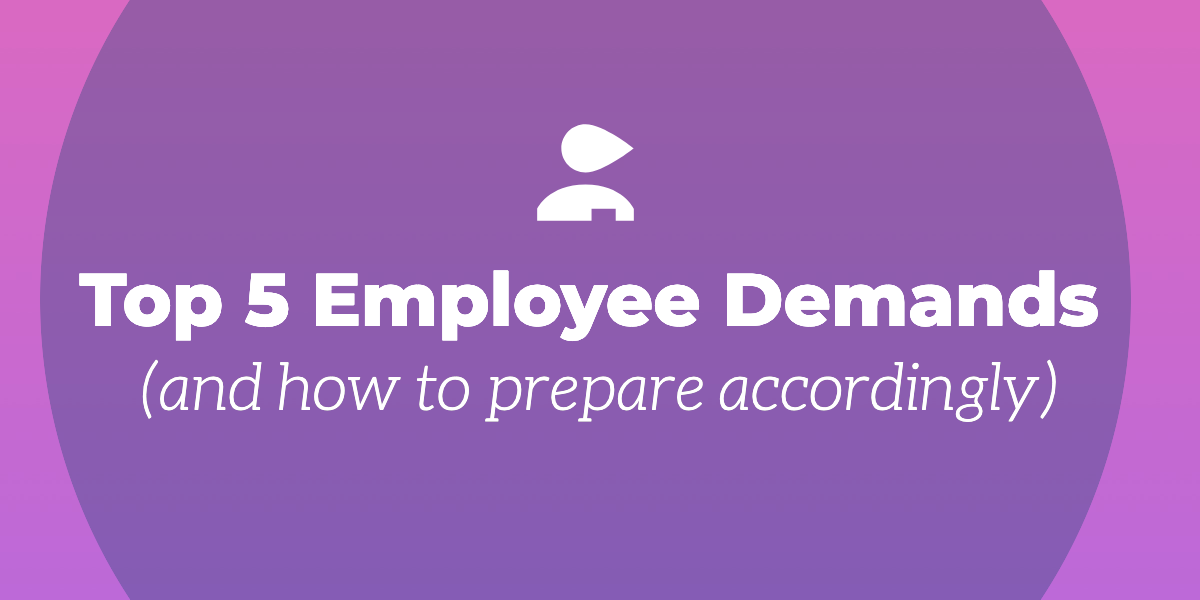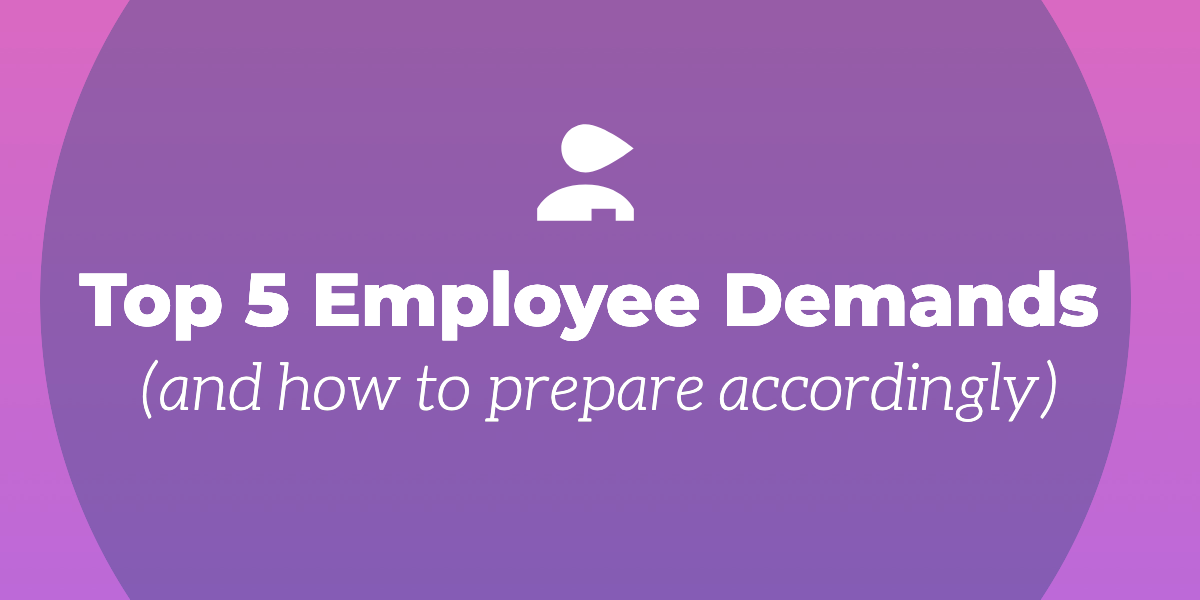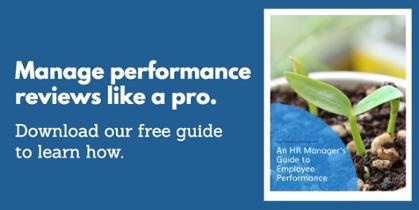
In 2018, a Bureau of Labor Statistics survey found workers were quitting their jobs at the highest rate since 2001, according to Bloomberg. And while stagnant wage growth may have many workers seeking positions with higher pay, there may be another reason why employees are walking away from their respective posts.
A healthy labor market means that the power has shifted from employers to employees. In other words, people know what they want and, if their current employers aren’t willing to oblige, they’re ready to find what they’re looking for elsewhere.
As an HR professional, this puts you in a tricky spot. On the one hand, you want to reduce turnover and help provide better experiences for your workforce. But, on the other hand, giving in to your workers’ every whim can set a dangerous precedent (and quickly consume your budget). Plus, employees aren’t always forthcoming about their wants and needs.
So what can you do? Here’s a breakdown of the five most common employee demands and expectations, and how you can plan for them in your larger employee management strategy:
1. Skill-building opportunities
A whopping 94 percent of employees say they would stay with their employer longer if the company invested in opportunities to help them to learn, according to LinkedIn Learning’s 2019 Workplace Learning Report. And, according to the same report, a quarter of Millennial and Gen-Z workers said not having the opportunity to learn and grow would be their No. 1 reason to leave a job.
As an employer, this should come as welcome news. After all, a better-trained and more highly-skilled workforce often translates into higher revenue. Consider offering continued on-site training, education reimbursement plans or mentorship programs. The ROI can be well worth any initial costs.
2. A sense of purpose
“Doing meaningful work” was the No. 1 factor for employee happiness among workers in the U.S. (as well as the U.K. and Germany), according to a report by Wrike. Unfortunately, 61 percent of respondents said their employer’s company vision only “somewhat” resonates with them, or doesn’t resonate at all. If employees don’t see the big picture (or their role in that picture), it’s hard for them to feel engaged with their work.
HR leaders can help employees better connect with the company vision and mission by clearly communicating with them on a regular basis. It’s also critical for managers to show individuals how their contributions impact the organization and align team goals to companywide objectives.
3. Better management
There’s a saying in HR that goes something like, “People don’t leave companies, they leave managers.” And while this isn’t always the case, poor management can certainly drive employees toward the door. Managers who are controlling, aggressive, insensitive, apathetic or disorganized can threaten employee engagement — even among employees who otherwise enjoy their work and the organization as a whole.
One of the best ways to improve in this area is by offering more comprehensive management training (including soft skills training), and by making sure a management candidate’s leadership style aligns with the organization’s culture before putting them in charge of others.
4. Competitive compensation
There’s no doubt people want fair compensation for their work. At the end of the day, even if someone loves their job, they’re mostly there for the money. After all, while fun perks are a nice bonus, they don’t pay the bills.
Unfortunately, small businesses can’t always compete with the deep pockets of massive, global organizations. So, how can you possibly retain top talent when they can earn significantly more elsewhere?
The key is to keep your salaries as competitive as possible and make up for any gaps through other opportunities. For example, a highly-skilled employee may be more willing to stay at a smaller company where they have better opportunities for upward mobility than to move to a larger organization where it may be harder to move up or make an impact.
5. Flexibility
According to a report by people analytics platform Werk, 96 percent of workers want some type of flexibility, but only 47 percent of them have it. From flexible hours to remote work, today’s workforce is seeking employment that supports a better work-life balance and that allows them the freedom to attend to outside obligations without making sacrifices (for example, having the opportunity to telecommute on a day they have to stay at home with a sick child, rather than having to use precious PTO).
Of course, as an HR professional, you’re always considering the “what ifs” of every scenario — such as, “What if employees begin to take advantage of their flexibility and productivity plummets?”
The best solution is to create policies that safeguard against reduced performance, such as requiring employees to regularly check in with their managers when working from home, and quickly addressing any instances of poor performance. It’s better to take disciplinary action against employees who break the rules than to penalize your entire workforce (and potentially lose top talent) by failing to provide the flexibility they desire.
While workers may have more power in today’s healthy job market, employee demands are not as outlandish as you might expect. By taking action to provide these five items, you’ll be better equipped to attract and retain highly-qualified and experienced professionals.


